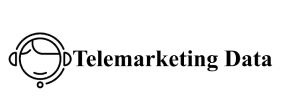Email list data refers to the collection of contact information and associated attributes about subscribers or customers who have opted in to receive communications from a business. This data typically includes:
-
Email addresses (the most fundamental element)
-
Names (first and last)
-
Demographic details (age, gender, location)
-
Purchase history and preferences
-
Behavioral data (email opens, clicks, website visits)
-
Engagement scores and subscription status
By compiling and analyzing these data points, Avoiding Spam: Buy Bulk SMS essential for any business seriously entering the Chinese usinesses can segment their audience, craft tailored campaigns, and improve overall marketing effectiveness.
Why Email List Data Matters for Your Business
1. Improved Targeting and Segmentation
One of the greatest advantages of quality email list data is the ability to segment your audience into smaller, more relevant groups. For example, a fashion retailer could create separate lists based on gender, age groups, or purchase behavior, sending customized promotions that resonate with each segment. This personalized approach significantly increases open rates, click-through rates, and conversion rates.
2. Increased ROI
Email marketing consistently delivers one of the highest returns on investment (ROI) among digital channels. According to recent studies, every $1 spent on email marketing generates an average return of $42. This success is largely attributed to the precision offered by well-maintained email list data, ensuring messages reach the right people at the right time.
3. Enhanced Customer Relationships
Using email list data to send personalized content, such as birthday offers, product recommendations, or re-engagement campaigns, helps foster trust and loyalty. Customers feel valued when they receive emails that speak directly to their interests and needs, turning one-time buyers into repeat customers.
4. Reduced Spam Complaints and Unsubscribes
Sending irrelevant emails is a common reason subscribers phone number list mark messages as spam or unsubscribe. By leveraging email list data to segment your audience and tailor your campaigns, you minimize the risk of annoying your subscribers, keeping your list healthy and engaged.
How to Collect Quality Email List Data
Building a quality email list starts with ethical and effective data collection strategies:
-
Opt-In Forms: Use clear, compelling opt-in forms on your website, blog, and landing pages. Avoid pre-checked boxes or purchasing lists, as these lead to low engagement and legal issues.
-
Lead Magnets: Offer valuable incentives such as ebooks, whitepapers, discounts, or exclusive content to encourage sign-ups.
-
Events and Webinars: Collect emails during registrations for online or offline events.
-
Social Media Integration: Use social media platforms to promote your newsletter or email offers.
-
Surveys and Quizzes: Engage visitors with interactive content that also gathers demographic or preference data.
Best Practices for Managing Email List Data
1. Keep Your List Clean and Updated
Regularly remove inactive or bounced email addresses to maintain list hygiene. This improves deliverability and protects your sender reputation.
2. Respect Privacy and Compliance
Comply with data protection regulations such as GDPR, CAN-SPAM, and CCPA by obtaining explicit consent, providing clear privacy notices, and allowing easy opt-outs.
3. Use Data to Personalize Content
Dynamic content blocks based on subscriber data can angola lists make emails more relevant and engaging. Personalized subject lines and product recommendations can dramatically boost response rates.
4. Test and Analyze
Continuously monitor key metrics like open rates, click-through rates, and conversions. Use A/B testing to refine subject lines, email designs, and sending times based on audience behavior.
The Future of Email List Data: Trends to Watch
Artificial Intelligence and Predictive Analytics
AI-driven tools analyze email list data to predict subscriber behavior, optimize send times, and suggest content likely to resonate, making campaigns smarter and more automated.
Integration with Other Channels
Combining email list data with social media, CRM, and e-commerce platforms creates a unified customer view, allowing seamless omnichannel marketing strategies.
Enhanced Data Privacy Measures
As privacy laws evolve, businesses must adopt transparent data handling practices and innovative consent management systems to maintain subscriber trust.

